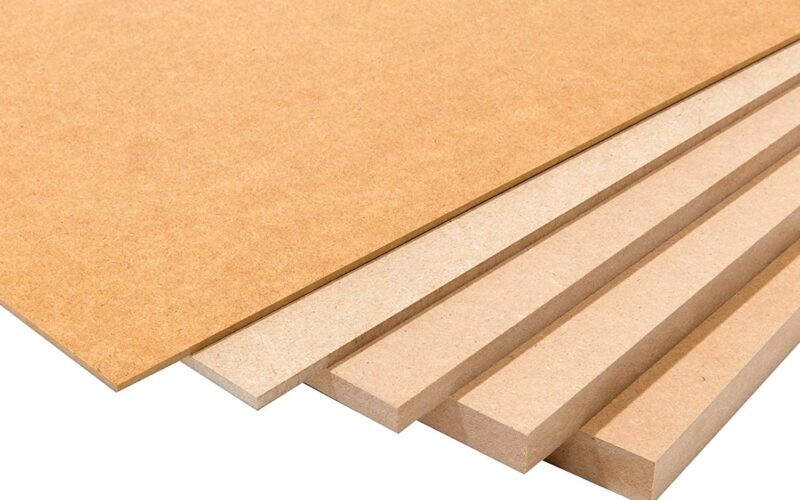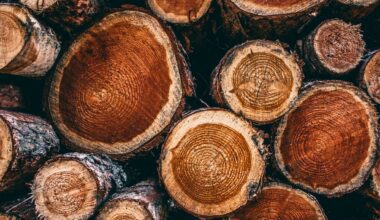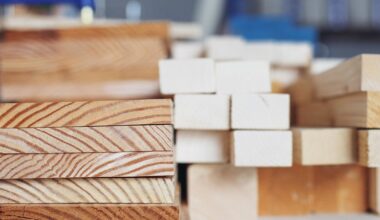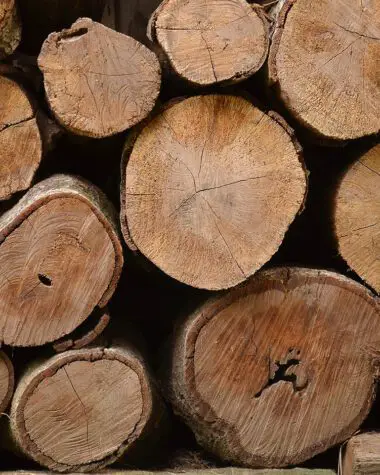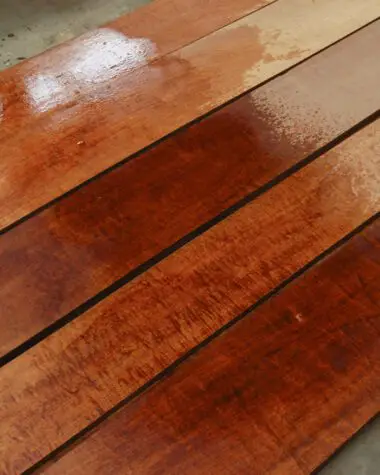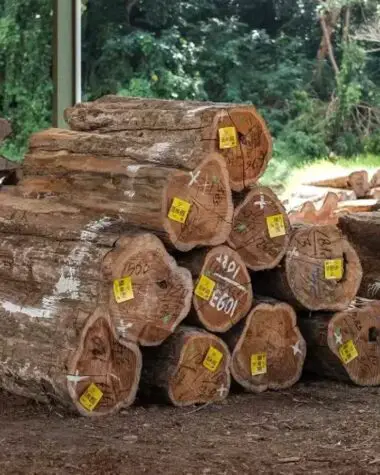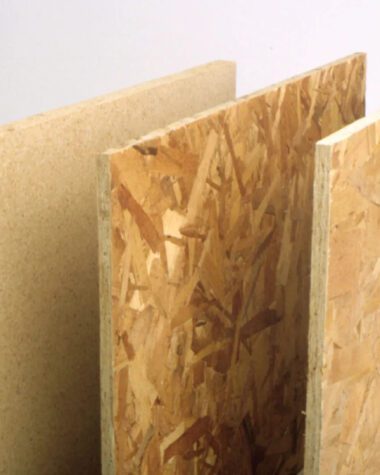MDF stands for Medium Density Fiberboard. It is the product of mixed resin and wax when heated up and pressed to get fiberboard. MDF comprises wood fibers or fiberboards, which are very tiny pieces of hardwood and softwood.
As one of the types of manufactured wood, you will be amazed at MDF’s uses. Also, it comes with amazing characteristics that make it one of the best choices for many applications.
General Properties of MDF
Medium Density Fiber is the product of wood-mill waste that is crushed into a fine powder, dried to eliminate moisture, combined with resins, and then pressed into flat, rigid panels. These wood-mill waste materials may include sawdust and wood shavings.
Unlike plywood, MDF lacks a wood-grain look and has a uniform light-brown tone with no obvious texture or pattern. In addition to being significantly denser, smoother, and harder than plywood, MDF is also completely free of holes, knots, and splinters.
Meanwhile, most home improvement retailers and lumber yards sell MDF in 4×8-foot sheets in two different thicknesses: 12 in. and 3/4 in. The MDF with a thickness of 14 inches is also available, but usually in 2×4 ft. panels. Note that MDF is resistant to fire, and moisture is also available, albeit they are more difficult to locate and often require a special order.
Common Uses for Medium-Density Fiberboard (MDF)
Medium-density fiberboard is made of synthetic wood. Thus, it is extensively used for various purposes, such as:
Interior Design
MDF is a versatile manufactured wood type used in interior design projects, such as baseboards, wainscoting, and wall paneling. Additionally, it can be used for built-in cabinets or shelving.
Model Railroad Scenery
Since MDF is easy to cut and shape, it has been used for various model trains and scenery. This wood type creates a realistic appearance, especially when painted or stained.
Door
MDF is a flexible material that has several applications for doors. It can be utilized for both interior and exterior door frames. It can also be used as a veneer over a wood door or for the panels of doors. MDF is a common material for doorstops and door jambs.
Exterior Cladding
MDF is frequently used in exterior cladding because of its durability. Additionally, it is simple to work with and can be routed, cut, and drilled to produce customized designs. MDF is a cost-effective substitute for other cladding materials and can be painted or stained to match the exterior of any property.
MDF vs. LDF vs. HDF
Medium-density fiberboard is basically a wood material that uses medium-density wooden fibers. On the other hand, a low-density fiberboard (LDF) or particleboard is made out of even smaller pieces than MDF. Even minute sawdust may be used to construct particle boards. And because of this, there is no doubt that LDF is weaker than MDF.
If there are LDF and MDF, there is also a high-density fiberboard (HDF) or hardboard. This particle board was subjected to more heat and pressure than other fiberboards. Usually, adhesives are not required. The hardboard is very strong but is not expensive at all.
MDF Wood: Pros and Cons
The pros and cons of this wood type are discussed below to provide a clearer understanding of medium-density fiberboard.
Pros:
The advantages listed below have made this engineered wood popular around the world.
- It is very cost-efficient. Thus, you will pay less than for some solid wood materials.
- It is eco-friendly because of the use of recycled wood.
- MDF is protected against infestation as it uses chemicals during wood manufacturing.
- MDF will not expand and contract due to heat and humidity the way solid wood can.
- MDF is easier to shape than solid wood, giving way to various designs.
- You can attach the veneer to MDF to give it the look of lovely traditional wood.
- MDF does not have knots that can affect the natural surface of the wood.
Cons:
Some of the major drawbacks of using MDF are listed and discussed below.
- MDF may emit formaldehyde, though this dangerous chemical has been largely dissipated by the end of the construction process. MDF should be painted to reduce any health risks.
- When MDF chips or cracks, you cannot repair or cover the damage. You must completely replace a complete wood panel.
- MDF is less child-friendly compared to other materials.
- MDF can swell when exposed to water.
- The glue in MDF can make it hard to use certain fasteners on the material.
How is MDF processed?
MDF production has undergone procedural changes over time. Modern technology has made its production transformed into a high-quality and productive one. Therefore, it is a successful business today. The manufacturing procedure of MDF includes the following:
Collection
The first step in processing MDF wood is selecting and refining the raw material or wood waste, such as chips and shavings. They are gathered from plywood manufacturing factories and sawmills.
Wood Preparation
In wood preparation, the metal contaminants are removed using a magnet. The components are divided into big lobes and little pitches. The remaining metals are separated using a magnetic detector. Meanwhile, the chosen fibers are sent for pressing. A plug screw feeder and a side screw feeder are employed. This requires the removal of water, which is a crucial operation. The substance is refined into usable fibers. Larger motors are used to remove foreign items.
Curing and Pressing
Before refining, the resin is added to lower formaldehyde tolerance, and following refinement, a catalyst is applied. The required amount determines how much resin is used. A mat can be created with a consistent thickness with a scalping roll. Compressing is carried out in stages. These are clipped or cut before being processed completely. It is pressed into a flat mat using a sizable drum. The resulting board is trimmed before cooling.
Panel Sanding
The prepared panels are sanded to ensure a flawless finish. Abrasive coatings are found on belts that are in use. Several types of ceramic abrasives are utilized, including zirconium alumina and aluminum oxide. A finer surface is also achieved using silicon carbide. Grading is done on both sides to increase consistency. Anti-static technology is utilized during manufacturing to prevent static electricity. Excessive dust is a result of static electricity.
Finishing
In this part, there are two stages involved. Cutting is the first stage of finishing. The standard of MDF finishing procedures varies depending on demand. Variations in color and wood grain are noted. Different cuttings are used for different size cuttings, such as:
- Specialty machines for Narrow strips cutting: (1-24 inch/2.5-61 cm
- Die cutting for Small size cutting: (42-49 inch/ 107-125 cm)
- Guillotine cutting for Large sheet cutting: (e.g., 100 inches)
Other Wood Types You May Be Interested In
Discover more of the different manufactured wood types below.
Conclusion
MDF wood is cost-efficient, eco-friendly, and very easy to use. However, this material is not as strong as hardwood or even plywood. Beyond this, some still find MDF useful, like solid wood. Hence, you may still find wooden furniture made from MDF, but these have been carefully managed to prolong their lifespan.
